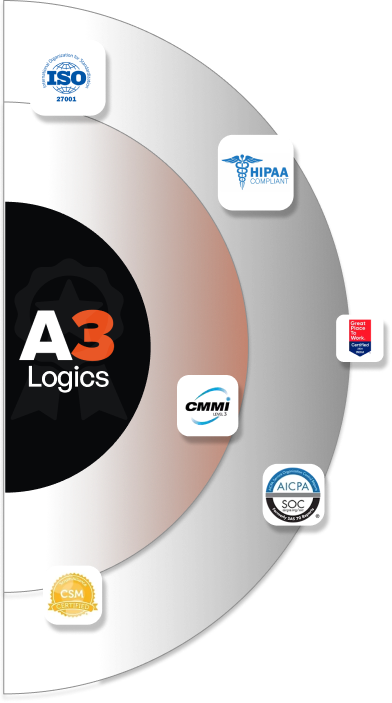Professional hackers these days are striving to discover better approaches to get confidential information related to your business and clients. It’s not astonishing that digital security chance is the best of the psyche for each hazard proprietor, in each industry – be it retail & ecommerce, travel and leisure, banking & finance or any other sector. Technology Security loophole is typically a vulnerability in the operating system, enabling an attacker to compromise the system. As the recurrence and multifaceted nature of vindictive assaults tirelessly develop, each organization ought to perceive that they are powerless to an assault whenever—regardless of whether it comes as an outer centered assault or a social designing assault. Many of them look forward to IT consultation services providers that can help businesses stay safe and secure. How about we investigate the best 5 hazards that each hazard proprietor ought to plan for.
Table of Contents
5 Technology Security Loopholes for Businesses
-
Your Very own Clients
This is quite obvious. If your business environment is open to your clients, intentionally or unintentionally the information related to your business may be at risk. Many a time, transfer of data would be the moment the threat knocks in. The major reason behind your data being hacked is you are using cloud applications with weak security and privacy protocols.
You have your data over the cloud that is accessible to your clients too. There could be a weak link, who out of malicious intentions misuse the information or hamper it. Just be aware and move to your cloud computing service provider for more secure and safe data storage and transfer. For this, you can partner with an AWS service provider. AWS offer unmatched security benefits that business can take advantage of.
-
Phishing
Deceptive emails are the easiest ways to enter into someone’s cyber security setup. It is important that you do not respond to such emails or click the links expected. At times, these links seem to be so authentic that it can fool the experts. A click, and the hacker enters the security system of your business. Once in the system your confidential data and client information, everything is available to them. Phishing is the most popular type of cyber fraud that is a great threat not only to the businesses but to the individuals too. It does confuse the general public too. Sometimes it is not from the business end, but from the client end that a suspicious link spoils the game for the complete business environment.
What is the best type of guard here?
- Don’t run your client frameworks with authoritative rights. This enables any pernicious code to execute at root level benefit
- Train, train, and re-train your clients to perceive a phishing email, or all the more significantly, perceive an email that could be a phishing trick. At that point approach the correct security assets for help. The best component for preparing is to run safe focused on phishing efforts to check client mindfulness either inside or with an outsider accomplice.
-
Disregarding Security Patches
One very common and overlooked error any IT-based organization or Cybersecurity providing organization can commit is to miss building up reliable executive programs. Disregarding the security patches is one thing that no organization should miss, but somewhere the hackers find the loopholes to seep in. To ensure there are no unattended threats, one must include the following things,
- Select and deal with helplessness examining framework to proactively test for blemishes in IT frameworks and applications.
- Make and deal with a fix the executives’ program to prepare for vulnerabilities.
- Make a procedure to guarantee fixing is finished.
We have a dedicated team of mobile application developers, chatbot developers, blockchain developers and salesforce developers who can work on security issues when providing the CRM, cloud computing solution or any other needs.
-
Third-Party Assistants
Organizations invest a lot of time and resources in Data Security Projects to address outer and inside environments, uncovered Web administrations, applications and administrations, arrangements, controls, client mindfulness, and conduct. Be that as it may, they overlook a huge threat factor, which is through any third party channel regardless of whether it is a server farm bolster supplier or a production network party.
We realize that prominent breaks have been executed through third accomplice channels, the target being the most prominent. Organizational approaches and controls must reach out to all outsider associates that have electronic or physical access to the business environment. Guarantee your Data Security Program incorporates all third accomplice accomplices or inventory network sources that associate or visit your undertaking. The NIST Digital Security Structure has an incredible appraisal methodology, where you can assess your vulnerability to this regularly disregarded hazard.
-
Information Security Breach
These days, information is the new cash. A lot of professional hackers are scouring the internet and e-commerce businesses to search for information that will profit them. Companies can incur great losses when hackers get unauthorized access to their data, software applications, data services, networks or devices by bypassing vulnerable underlying security mechanisms. As the need to deal with security threats is expanding so the IT outsourcing services are emerging as business growth drivers.
How Can Your Organization Overcome Such Loopholes?
Develop Security Protocols and Train Employees
The first step in protecting your enterprise data from cyber-attacks is to develop robust security policies. Having a specific set of security protocols for employees and partners ensures maximum security consistently applied across all departments of your company. This helps ensure security breaches don’t slip through the cracks.
Keep Company Network and Computers Secure
You should always secure all company computers with anti-malware software, or any trusted anti-ransomware programs. While such programs aren’t explicitly sufficient for a scalable security strategy, they do provide an added layer of protection in the event that employees click on a malicious pop-up or link which may plant an unwanted bug into the system. Moreover, the enterprise data management staff should check company computers regularly to ensure that all security software is up-to-date.
Encrypt Your Data
Robust encryption for your data codifies your sensitive information to prevent malicious companies or hackers from being able to read any sensitive content. Encryption, in other words, is the act of converting data into a format unreadable to humans.
Other Security Loopholes and Ways to Treat Them
Viruses and Worms
Viruses and worms are typically malicious software programs that target an organization’s system, data, and network. These software programs replicate other programs, systems, or host files. Unless activated accidentally or willingly, the virus remains dormant. Only after activation, the virus can spread without the knowledge of a user or system administrator.
On the other hand, a computer worm is a replicated program that does not require any person to copy the program. The power of a worm is, it spreads automatically, invisible to the users using parts of the operating system. A worm, when once enters the system, can start infecting computers and networks that aren’t securely protected.
How to Prevent them –
With proper IT assessment solutions, companies can identify the loopholes, and to deter them with robust and stringent firewall software or programs must be integrated into all systems. Users must be trained and restrained from downloading unknown attachments, cautious about sharing and retrieving P2P files while avoiding paying attention to the popup ads.
Botnets
A botnet is an infection on various devices that are connected through the internet. The malware within these devices is usually controlled by a common type of malware. The actor creating this malware look for the maximum possible device infection. Using computing power, the botnet travels through the internet and looks for devices that use computing power to automate tasks and less human intervention. These botnets can be seen as spam emails, and as soon as you click on the message or fraud campaign, you integrate malicious traffic disrupting connected devices one by one.
How to Prevent them –
There are multiple ways to overcome data security challenges and keep them safe from Botnet infections –
- Ensuring updated operating system.
- Ensuring updated software and installation of necessary security patches.
- Monitoring network performance at regular intervals.
- Integrate antibot tools to detect and prevent bot viruses.
- Educating users to prevent them from engaging themselves in any activity or unfamiliar sources.
Security is the topmost priority for us.
Our experts take full responsibility of ensuring that the development meets the security needs
Distributed denial-of-service (DDoS) Attacks
DDoS is an advanced-level attack, which comprises machines to set targets, such as websites or servers or any networking resource. DDoS makes the target completely inoperable by sending a heap of connection requests, incoming messages, or malformed packets. These activities ultimately slow down or crash and even shut down the system, denying legitimate service to the users.
How to Prevent Them –
IT professional services providers must take vital steps to prevent such dangerous attacks that can tear down business and its reputation. These preventive measures can assist –
- Monitoring server capability to handle heavy traffic spikes.
- Use necessary mitigation tools.
- Hire security experts to quickly identify and comprehend DDoS attacks clues.
- Updating and patching network infrastructure through regular updates and network security programs.
- Most importantly, setting up protocols to prevent DDoS attacks.
Exploit Kit
Exploit Kits are usually a programming tool that allows an inexperienced developer to learn and write codes. They can easily customize and distribute malware and is most commonly of use to cybercriminals to attack system vulnerabilities.
Exploit Kits also known as infection kits, crimeware kits, DIY attack kits, and malware toolkits. The tool can let cybercriminals distribute malware and engage in stealing corporate data, launching denial of service attacks, and even building botnets.
How to Prevent Them –
Enterprise software development companies with highly confidential data should take extra measures to guard their business against these explosive malware attacks. A resilient and extra layered antimalware software can protect enterprises from attacks.
They can continuously guard the infrastructure while preventing any malicious code from entering. Additionally, companies can integrate anti-phishing tools to avoid any compromises within the websites or penetration to the network.
Advanced Persistent Threat (APT) attacks
Also known as APT, advanced targeted cyberattacks are more of monitoring network activity instead of causing any damage to the system or network. Cybercriminals typically use APT to gain information access, inclusive of exploit kits and malware. However, some may use APT attacks to target high-value targets, such as stealing large enterprises and nation-states’ critical information over a long period.
How to Detect APT –
Advanced measures, such as employing a security team for continuous monitoring database and network infrastructure while maximizing security posture and detering stealing of valuable information.
- When unusual activity persists.
- Extensive use of backdoor Trojan horse malware.
- A sudden spike in database operations, including a massive amount of data.
- Presence of unusual data files to assist them in the exfiltration process.
Integrating a cloud firewall can guard you against APT attacks. The use of web-application can detect and prevent attacks while acknowledging the data coming from another website must be SSL certified.
Malvertising
A technique used by cybercriminals to inject their malicious code into advertising networks and web pages. The code prepared by the cybercriminals redirects the users to dangerous and explosive websites, which becomes the key to inject malware into their devices from one to another.
Savvy cybercriminals use malvertising to attract users and deploy different money making malwares. Examples includes: crypto-mining scripts, ransomware, and banking Trojans.
Even if the user does not download the attachment or file, the code can be distributed to the user’s computers or mobile devices.
How to Prevent them –
The ad companies must take responsibility to validate ads before publishing them. Validation ensures – companies must vet prospective customers and request legal business papers, two-factor authentication, and scan all ads for malicious content.
The web host must also monitor the advertisement for malvertising attacks on their respective websites or apps.
A few well-known sites with continuous ads include Spotify, The New York Times, and the London Stock Exchange. These indirectly puts a lot of risk on users.
The Key Takeaway!
So, now you are quite aware of different cyber threats that may ruin the game for you in the business domain. Also, we have discussed here a few methods that you must implement to protect your information.
FAQs
What are technology security loopholes that all businesses must consider?
Talking about technology security loopholes, businesses must check with the vulnerabilities in their technology infrastructure. Businesses must assess the threats that can be misused by the fraudsters. These gaps can be outdated software, lack of encryption, weak passwords, and inappropriate security setup.
How can a security loophole can make your businesses suffer?
There is a lot to be worried about with the technology security loophole. It can literally cost your business significantly. It can expose your business to various risks that include financial losses, data breaches, legal consequences, and reputational damage. So, this shows why businesses must keep on checking with the loopholes and stay ahead of the hackers to keep their business protected from any kind of mishap. You can always consider taking assistance of IT Consulting services for maximum advantage.
Name some of the technology security loopholes that one must be aware of?
There are many loopholes that one must know about so that you can remain prepared for the same. If you are thinking about some of the common ones, then it can be malware infections, phishing attacks, unsecured Wi-Fi networks, insecure remote access, and adequate employee training. So, it is essential for businesses to remain updated on all the security threats as specified. They must take all the proactive measures to keep these threats under control.
How can a company keep technology security loopholes under control?
There are several ways businesses can prevent technology security loopholes under control. Some of the important steps are followed by executing strong security measures. This includes regularly updating systems and software, encrypting sensitive data, using complex passwords, using antivirus and firewalls software, and more. Also make sure to provide proper employee training on best practices related to cybersecurity.
What are the probable consequences of not keeping an eye on technology security loopholes?
There can be serious consequences if you are not able to keep an eye on technology security loopholes. It can lead to serious consequences. These can include financial losses, disturbed operations, bad reputation, and stolen data. There is a lot more to it. So, it is important that businesses keep an eye on all types of technology security loopholes. To avail assistance you can connect with IT outsourcing services experts and get all of it sorted.





